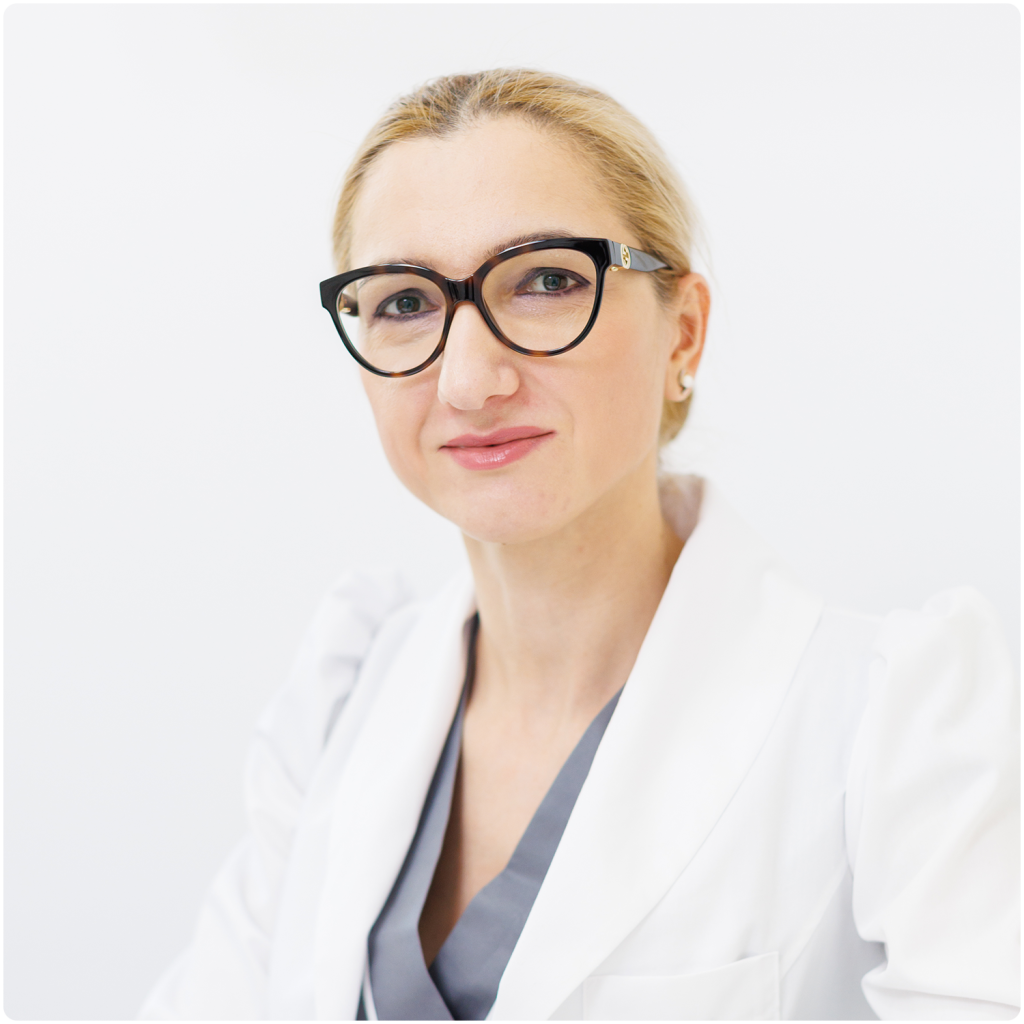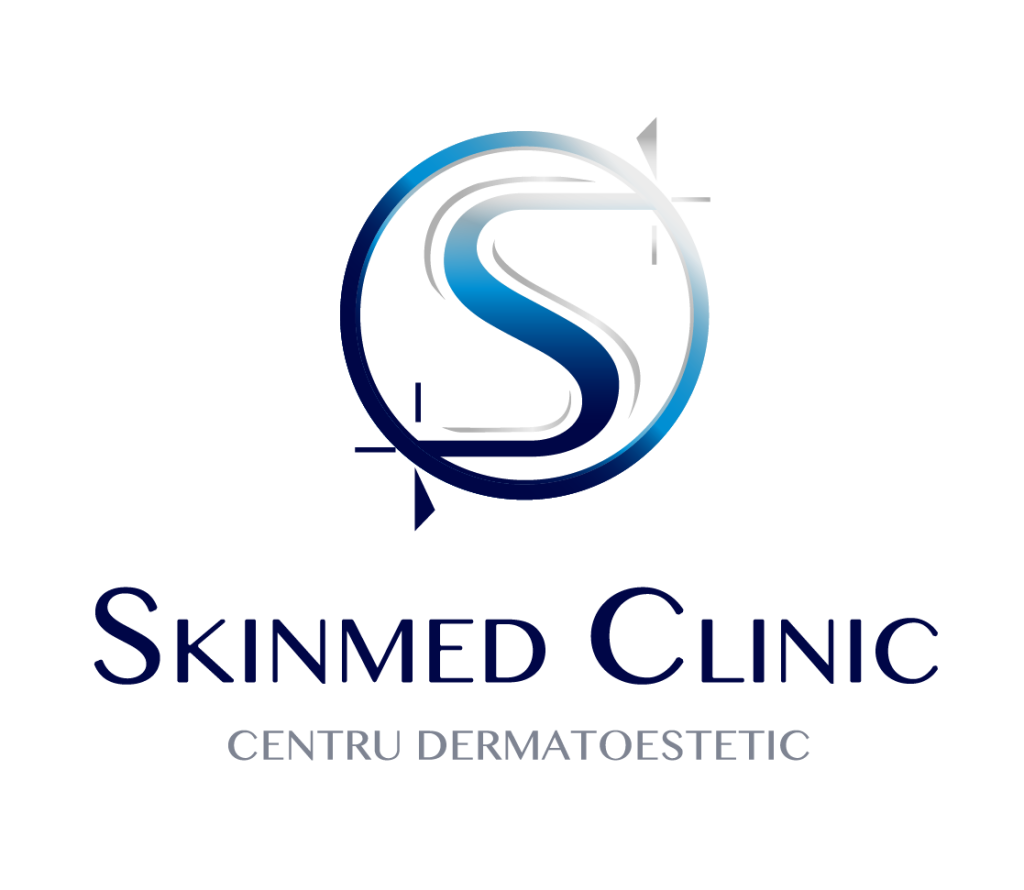Through sclerotherapy sessions, possibly combined with laser therapy, you can regain the uniform appearance of the skin, without visible vascularity.
Visible blood vessels
Effective sclerotherapy treatment
Who are we talking to?
Both women and men concerned about beauty and skin health, with restoring structures and integrating a confident attitude!
Sclerotherapy is one of the most effective methods of treatment for venectatia (superficial visible vessels) and is aimed at people who want to remove the unsightly appearance of superficial veins on the legs or other areas of the body. This procedure is suitable for patients suffering from varicose veins or spider veins, which are dilated and visible blood vessels on the surface of the skin. Sclerotherapy is a minimally invasive and safe method that can be performed in a doctor's office or in a specialised clinic such as SKINMED®. It is generally recommended for people who are medically healthy and who have no other health problems that could affect their ability to heal following the procedures.
Why choose SKINMED® experts?
SKINMED® experts have extensive experience in minimally invasive aesthetic treatments and are constantly in touch with the latest national and international information on new treatments and technologies. Through the filter of experience, we choose the most effective and risk-free products and technologies for our patients. Aesthetic consultations involve an elaborate discussion of the patient's wishes with specific medical assessment and complete anamnesis, in which the patient must correctly and completely expose all medical information regarding the health condition, so that the procedures are carried out in complete safety. During the consultation, the specialist should explain the procedures and options available, discuss potential and expected outcomes, answer any questions the patient may have and ensure that the patient understands the potential risks associated with the procedure. A thorough discussion should also focus on any expectations the patient may have regarding the outcome of the treatment. Finally, the SKINMED® expert will provide clear instructions for care before and after the procedure. We help you choose which treatment is most effective for you!
Benefits of sclerotherapy performed in SKINMED®
Injectable treatment
Preprocedural, Doppler ultrasound and clotting time analysis
Postprocedural, wearing compression stockings
Postprocedural, anti-inflammatory and anticoagulant treatment
What is the difference between venecardia and varicose veins?
Varicose veins are dilatations of the veins and are a severe surgical pathology with a serious impact on health through the complications they can cause, e.g. deep and superficial venous thrombosis, varicose ulcer, trophic changes in the skin (lipodermatosclerosis, erythematous dermatitis, white atrophy).
Venectasia are superficial dilations of small blood vessels (venules and capillaries), most commonly located in the lower limbs or face, in the form of blue or red lines, with a spider web-like or star-like appearance. Most commonly, venectasia appear on the outer thighs and calves and can form true networks over time. Venectasia have a fairly high potential to spread, especially in the presence of certain favouring factors.
Treatment methods for venectatis
The presence of varicose veins together with venous strictures requires surgical treatment of varicose veins and only then of venous strictures. Neglecting this aspect leads to failure to treat venous insufficiency, which will recur if chronic venous insufficiency persists.
In the treatment of venectasis, there are 2 categories of therapeutic options: Sclerotherapy and DyeVL/LP laser treatments.
See details
Sclerotherapy involves injecting an irritant substance into the venous lumen, which induces irreversible alterations in the vascular wall, followed by fibrosis of the vessel, the creation of a fibrous cord and closure of the lumen.
See details
Through its photothermal effect on target lesions, the LP YAG laser effectively treats a wide range of conditions with a vascular substrate.
How is it done?
Sclerotherapy is performed on an outpatient basis. No anaesthesia is required, but at most local application of ice, involving minimal local discomfort. The injection sites are marked with a special marker or a transilluminator is used. The sclerosing agent is then injected intralumenally into the vein with a very fine needle.
A sclerotherapy session can last between 15-60 minutes. To restore an even appearance without visible vascularisation, 3-6 sessions may be needed every 4-6 weeks.
What analyses are required and what are the post-procedure recommendations?
Postoprocedurally, the patient will wear compression stockings for 4 weeks and will be given oral or topical anti-inflammatories. Sometimes anticoagulant treatment (Clexane, Fraxiparine) is required. Early mobilization and walking without strenuous exercise is recommended.
Risks and side effects of sclerotherapy
Medical EXPERT in sclerotherapy
SKINMED experience and technology®,
for health and harmonious appearance
Advantages SKINMED®
Experience
- Over 19,000 patients treated in the clinic
- Over 300 new patients every month
- Over 20000 treatments per year
Credits
- FOTOFINDER-accredited Centre of Expertise in the Diagnosis and Treatment of Skin Cancer
- ALMA LASER accredited laser treatment centre of expertise
- ALLERGAN accredited centre of expertise in Aesthetics and Medical Injecology
Safety
- Technologies top accredited worldwide
Other treatments you might be interested in
Frequently asked questions
What is the usefulness of specialist consultation for sclerotherapy?
Aesthetic consultations involve an elaborate discussion of the patient's wishes, with specific medical assessment and a full medical history. During these, the patient must correctly and fully disclose all medical information about their health condition so that the procedures can be carried out in complete safety. During the consultation, the specialist should explain the procedures and options available, discuss potential outcomes, answer any questions about the medical problem and the procedures required, and ensure that the patient understands the potential risks associated with them. A thorough discussion also focuses on the patient's expectations regarding the outcome of the treatment. The SKINMED® expert will also provide clear instructions for care before and after the procedure.
What are venections and what causes them?
Venectasia (superficially visible vessels) must be distinguished from varicose veins. Although they are both vascular conditions, they affect blood vessels of different calibre and benefit from different treatment methods.
Venectasia are superficial dilatations of small blood vessels (venules and capillaries) located intradermally or subdermally. They can be: telangiectasias i.e. intradermal veins larger than 1 mm in diameter and reticular veins - subdermal veins larger than 3 mm in diameter.
Venectasia are most commonly located on the lower limbs or face, and appear as blue or red, shorter or longer, fine lines with a spider web or vascular star-like appearance. The colouring of the veins varies according to their depth.
Genetic predisposition and hormonal pathology on the one hand, and the action of precipitating factors on the other, are blamed for the aetiopathogenesis of venections. Genetic predisposition acts in about 99% of cases, together with associated hormonal pathology, so that the main victims of this condition are women. The hormonal combination present in women tends to relax the vessel walls; variations in oral contraceptives and other drugs containing oestrogens and progesterone, pregnancy and the onset of menopause increase the risk of developing venections. In addition to the factors mentioned, prolonged orthostasis (standing for a long period of time), excessive exposure to the sun, alcohol consumption and smoking increase the risk of developing venectasis. Overweight people with an unbalanced diet are prone to developing venectasis. Some experts blame hot waxing, hot baths and saunas as predisposing factors for the development of venous veins.
Venectasia, in the absence of a characteristic subjective symptomatology, pose mainly aesthetic problems, so their treatment has always been a challenge for the plastic surgeon, phlebologist or dermatologist.
What substances are used in sclerotherapy?
In theory, any substance can be used for sclerotherapy. At present, there is a wide range of sclerosing agents such as Ethoxysclerol, Polydocanol. The selection of the sclerosing agent and the concentration used for sclerotherapy is dictated primarily by the calibre (diameter) of the veins, but also by the preference of the phlebologist (each specialist will choose the product with which he or she has obtained the best results).
What are the contraindications of sclerotherapy?
Contraindications of sclerotherapy:
- large dilated varicose veins with massive reflux (indication for surgical treatment);
- acute thrombophlebitis;
- allergy to the sclerosing substance;
- Immobilized patients;
- pregnancy and breastfeeding.


